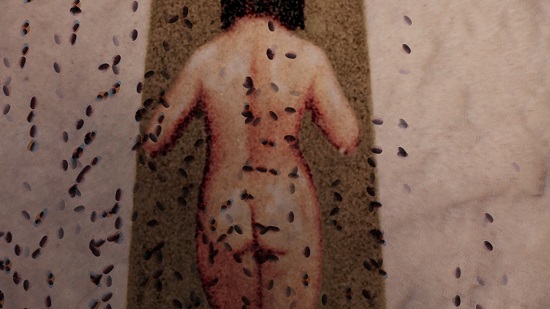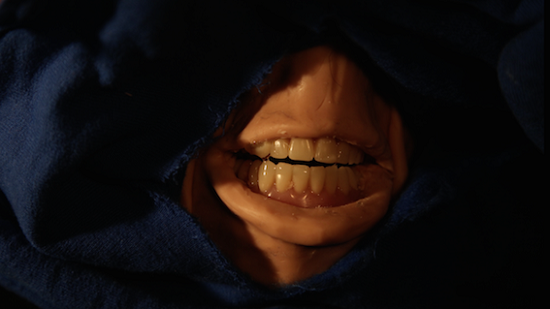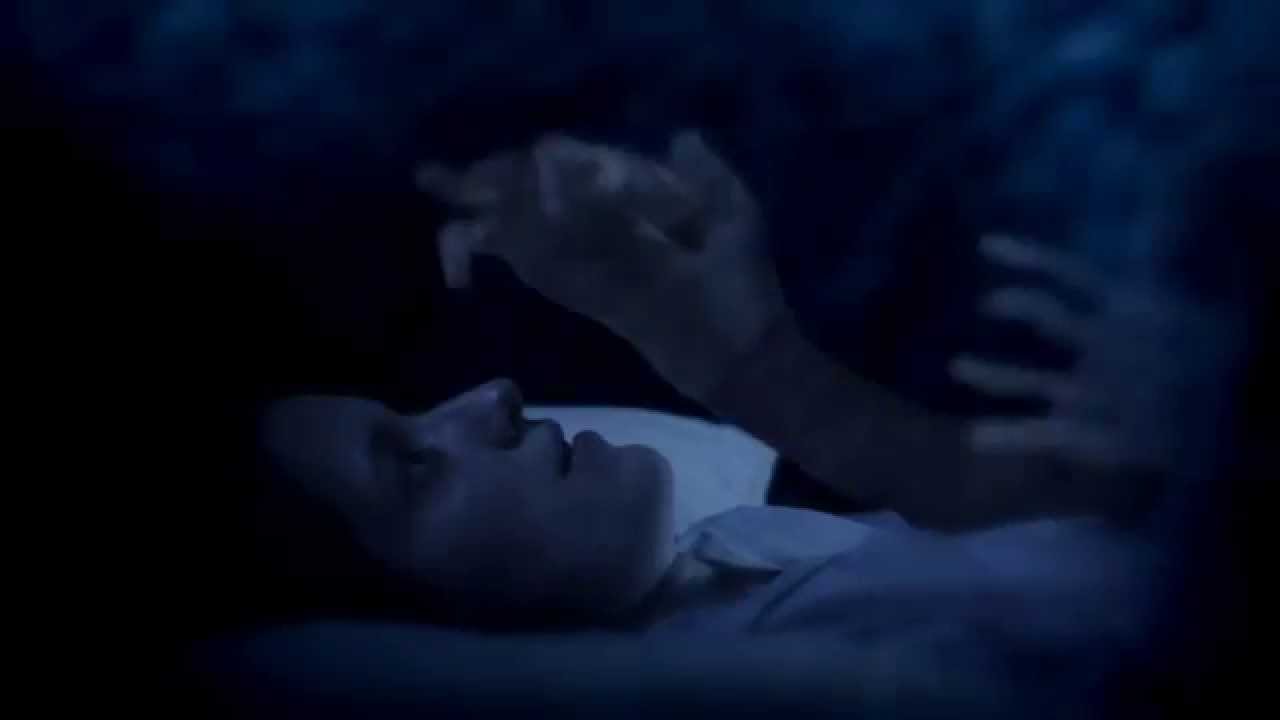The London Short Film Festival (LSFF), currently running in venues throughout the city, has always been marked by its commitment to exploring the interface between music and film. This year’s program features contributions from David Holmes, Shitwife, cellist Andreas Kohler and Skinny Girl Diet, and highlights films on subjects stretching from analogue synthesisers to the representations of women in music videos.
However one of the most vital and ever growing manifestations of the relationship between the two mediums is the phenomenon of what tend to be called ‘Live Soundtracks’ or, if you’re feeling a bit more ‘Wired’ magazine about it, ‘AV Shows’. Put simply: band chooses film, band plays an especially written soundtrack in front of film to the magnification of the qualities inherent in both, everyone has a unique experience. Sounds great, right? Every musician you’ll ever meet harbours an ambition to ‘do soundtracks’, so why not let them flex their cinematic muscles a bit?
The results, however, can be wildly unpredictable. For every genuinely eye-opening cross-cultural pollination there are an equal number of frustratingly incoherent audio-visual plane crashes, often marked by obscurantism, badly mixed sound levels, lazy musicianship and the deluded belief that by plonking a cruddy indie band in front of the Magick Lantern Cycle you are somehow creating the most vital ‘happening’ since Andy Warhol waggled a torch about in front of The Velvet Underground. What you need to make the whole concoction stick is an extraordinary amount of hard work, a genuine rapport with the material you’re working with and most importantly of all, a good idea at the core of it all.
Both the collaborators on this year’s music and film crossover demonstrate an abundance of those qualities. They are the inspired pairing of experimental animator Carla MacKinnon and musician Elizabeth Bernholz, AKA Quietus Album Of The Year winner Gazelle Twin. Elizabeth has been covered in depth on TQ over the last year, so I met up with Carla to discuss collaboration, animated chicken livers, data entry and horror films.
So what was it that first got you into animation and what still appeals about it as a discipline?
Carla MacKinnon: I studied fine art and I did a bit of animation during my course. I didn’t do much for a few years but when I started working on festivals at project management jobs I realised that animation was really good therapy, something you could do at evenings and weekends that you could just zone into completely. It’s a good obsessive activity. It’s creative while simultaneously being quite technical and meditative. You need to be really organised when you’re doing it so you’re engaging with all these different parts of your brain. I was interested also in where it sits in the creative industries because it seems like in so many other areas creative opportunities are shrinking, what with lower budgets and the amount of risk you’re allowed to take. With animation the commercial side of it can also be creative and experimental. You’re also able to create completely self contained fantastical worlds that exist in their own vacuum. Maybe it’s a control freak thing.
Meditative is an interesting word. Is that because of the repetition involved in the process..?
CM: Yeah, but it’s not boring, that’s what’s weird about it. It’s a bit like data entry work, or when you learn an instrument and you’re just doing scales. You can do that stuff and it can be the most boring thing in the world but sometimes you get in the zone with it and you’re in a flow state and you never want to do anything apart from data entry for the rest of your life!
How did the collaboration with Gazelle Twin come about? Did you know each other beforehand?
CM: Philip (Ilson, LSFF organiser) saw Gazelle Twin perform at the BFI and afterwards asked her if she’d be up for doing something with LSFF. He sent her a few examples of the shorts that he’d screened the year before and one of my film about sleep paralysis (Devil In The Room) was one of them. She’s very interested in trance states and dream states and nightmares, so we had a meeting and got on very well. I showed her some stuff I did a couple of years ago – some tiny experiments with animated meat – which she liked. That’s when I thought “this’ll work”. It was quite a short turnaround as we only got the sign off in November, so it’s been a very frantic and energetic process, which I think is good as it gives it an energy.
How collaborative has it been? Did the music come first and the images second or vice versa?
It’s been massively collaborative, especially considering how we’ve only met each other once during the process. She was touring when I started it, so I started doing some visuals based on her lyrics and music and from reading some of her interviews. I sent them to her and she started creating bits of music and pulling out some of her old work and seeing if it could be reworked. Then she’d send me tracks and I’d start working specifically to those tracks, so that steered what I was doing. Then I agreed what tracks we’d use as bases – a few holding tracks – and got a draft version across to her about a week and a half ago which she’s been working on ever since.
This structure is forming which I think makes sense. It’s not very narrative based but it’s moving through these different ideas. There’s a section that’s based around puberty – lots of bacteria imagery – and a section that’s more focussed on ideas of phobia, which is a bit more nightmarish. It’s framed by this kind of through line which is to do wit the body just being a bundle of meat and nerves, and the things you experience as a result of that.

Gazelle Twin presents a very strong and unique visual image. Are you pulling away from utilising that or are you choosing to embrace it?
CM: I’m using it, but it’s definitely not a music video. There are a lot of things that have to do with facelessness, which is big in her performance, and the blue fabric she wears comes into it quite a bit. I like the idea of not knowing what’s underneath the fabric. I saw Elizabeth once live – before the show was commissioned – and I was watching her and I had this image in my head of this bag of raw meat in those nylons, twitching. That was what I wanted to try and get. A lot of it’s from that image, but I think it’s developed a lot. A lot of her aesthetic crosses well into my stuff, but then she’ll say something like “Why don’t you put some teletext style subtitles on it?” And I’ll think “Oh, that doesn’t sound like the kind of thing I’d do at all…”, but I’ll try it and it’ll look great! So it’s been really great having her bits of input.
One of the things I’ve found from projects I’ve done is that when you manipulate footage of gore it becomes really psychedelic. There’s a transcendentalism that comes out of diving into the meat.
CM: I was doing this over Christmas, so I was making it when I was staying at my parent’s house. I’d get up after they’d gone to bed and transform their kitchen into a stop-motion studio. Occasionally my mum would come down and she’d just find me elbow deep in a bucket of hearts or something! It was like “Oh God, Carla, what are you doing?” But you find you get into this weird state, particularly when you use the organs. You really get into using these materials. I was doing quite a lot of stuff with making chicken livers crawl around, and you really start feeling connected to these objects. Then suddenly you’ll be like “this is so disgusting, I have to get this off me!” You just want to get it in the bin, take the bins out and disinfect everything. It’s like you wake up and realise what you’re doing and how horrific it is. But it’s a really immersive material to work with. I’ve also been doing quite a lot of stuff taking the meat work and putting it into after effects and mirroring it and creating these kind of looped patterns with it, so it does become pretty psychedelic.
In Devil In The Room there’s a real tactility to your use of sound. Has Elizabeth taken responsibility for that side of things or are you both working together on it?
CM: In the same way that she’s been suggesting some visual elements, I suppose my visuals have been suggesting sound and sending her rhythms. I think a lot of the show has become a bit more ethereal than her normal shows would be because of some of the imagery, so she’s created little sections that work with that.
There can be a temptation toward over-literalness with these kinds of performances. Do you ever find yourself thinking “that’s too on-the-nose, I need to pull away from that”, or do you follow those kinds of threads through to their conclusion?
CM: I don’t think we could have made it literal if we’d tried, because of the tracks changing so much. She had a song that wasn’t completed which was called ‘I Can Move It’. The lyrics were ‘This is my hand/I can move it’. I started working to that as a draft and I was actually shooting some close-ups of my hand. I was like “Is that going to be too literal?” and then it comes back again and its got completely different words to it anyway. I quite like the idea of the words and image occasionally colliding very very literally and then going away from each other again.
Does that process have to happen accidentally, though? Is it perhaps something that you can’t really engineer?
CM: I think in moments you can. But in the same way that if you play a random track over a film the two seem to synch together. I think there is a huge amount of serendipity that comes out. There’s a couple of more literal moments and also an interplay with words that come up on the screen, where she’ll be reading at the same time. I have no idea how that will work. The whole thing with this is that we’re not going to know how it works until the day. That’s exciting.
I was going to ask you about horror films. I certainly noticed a horror influence on Devil In The Room. Are you a fan?
CM: Oh, I love ’em, yeah! I don’t really like comedies. I’m not that bothered about making films that will make people laugh. I more want to make films that will make people scared or unsettled. I think it’s such a strange and powerful feeling to be in a cinema surrounded by people but still be terrified. It’s funny with Devil In The Room, because some people found it quite creepy, but five percent of people found it really very scary and were quite upset by it. And then of course another bunch of people just thought it was a bit silly. I quite like the idea of something that sits in between horror and absurdity.
A lot of good horror films do manage to find that balance between horror and ridiculousness…
(David Lynch’s) Lost Highway gets to something that’s psychologically nightmarish. The scene where the little guy says he’s in the main character’s house and makes him call him up. It’s so silly! And he looks really silly – he’s really over made up – but it’s absolutely terrifying. I don’t know what that essence is about it, but it feels really true. It’s like stepping into a nightmare world.
London Short Film Festival Starts today. The Gazelle Twin and Carla MacKinnon collaboration will be showing at the ICA on the 15th of January. For a full programme see here



